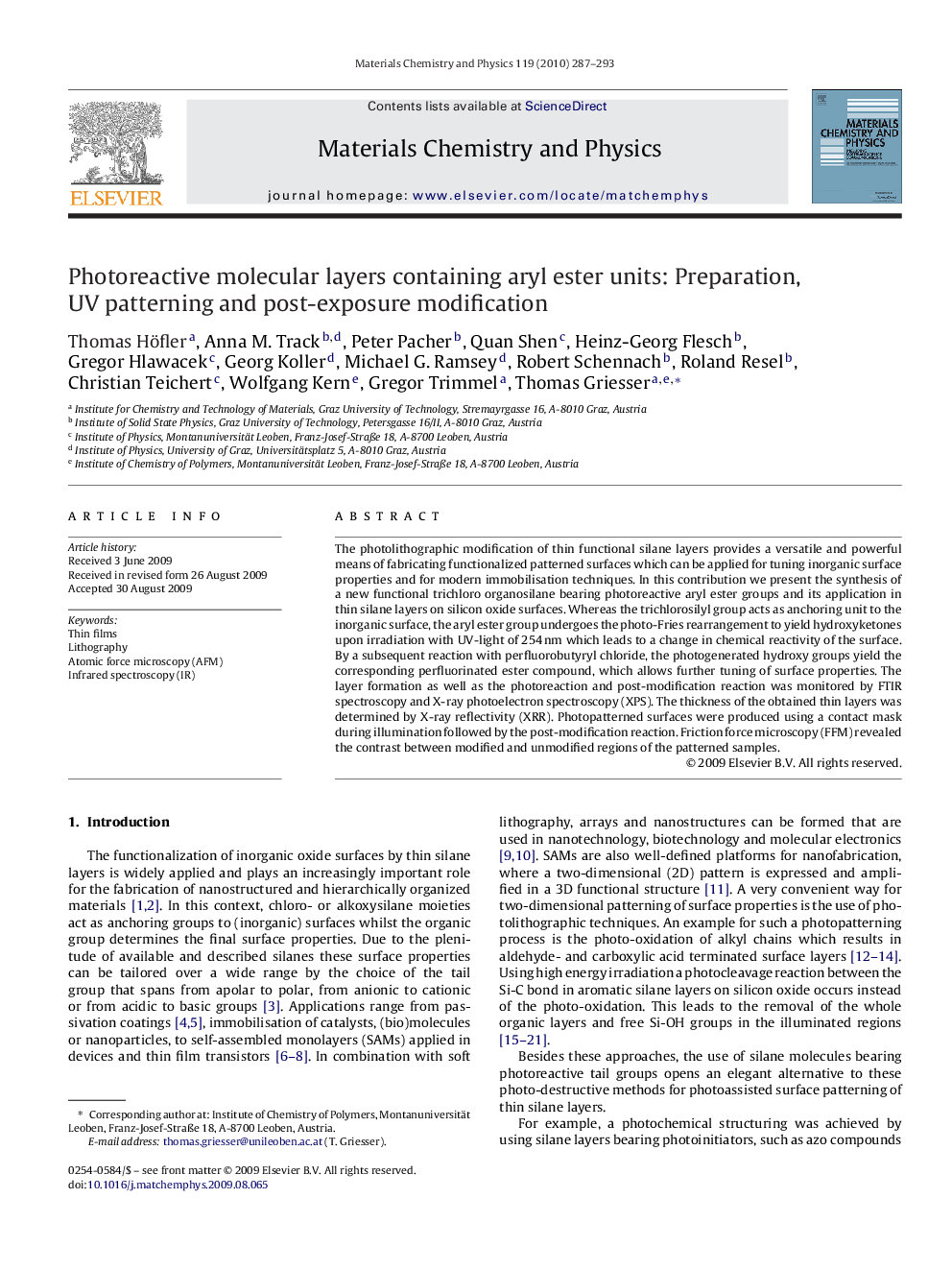| Article ID | Journal | Published Year | Pages | File Type |
|---|---|---|---|---|
| 1525786 | Materials Chemistry and Physics | 2010 | 7 Pages |
The photolithographic modification of thin functional silane layers provides a versatile and powerful means of fabricating functionalized patterned surfaces which can be applied for tuning inorganic surface properties and for modern immobilisation techniques. In this contribution we present the synthesis of a new functional trichloro organosilane bearing photoreactive aryl ester groups and its application in thin silane layers on silicon oxide surfaces. Whereas the trichlorosilyl group acts as anchoring unit to the inorganic surface, the aryl ester group undergoes the photo-Fries rearrangement to yield hydroxyketones upon irradiation with UV-light of 254 nm which leads to a change in chemical reactivity of the surface. By a subsequent reaction with perfluorobutyryl chloride, the photogenerated hydroxy groups yield the corresponding perfluorinated ester compound, which allows further tuning of surface properties. The layer formation as well as the photoreaction and post-modification reaction was monitored by FTIR spectroscopy and X-ray photoelectron spectroscopy (XPS). The thickness of the obtained thin layers was determined by X-ray reflectivity (XRR). Photopatterned surfaces were produced using a contact mask during illumination followed by the post-modification reaction. Friction force microscopy (FFM) revealed the contrast between modified and unmodified regions of the patterned samples.
